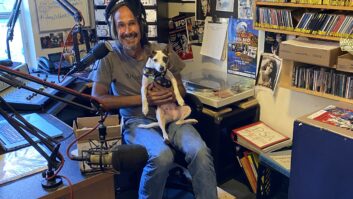Radio World publishes User Reports on products in various equipment classes throughout the year to help potential buyers understand why a colleague made a given equipment choice. These are unpaid testimonials by users who have already purchased the gear. A Radio World Product Evaluation, by contrast, is a freelance article by a paid reviewer who typically receives a demo loaner.
CLOVIS, N.M. — I own a four-station group in the small market of Clovis/Portales, N.M., consisting of KSMX(FM), KRMQ(FM), KSEL(AM) and KSEL(FM).

My experience with ENCO’s DAD automation system goes back to the mid ’90s, when the station I was working for at the time, KFMB in San Diego, brought DAD in house. I was the one charged with figuring out how it would work from a programming and execution standpoint. Since then I’ve worked at different radio stations using several automation systems; my system of choice is DAD.
When my partner and I purchased this group in 2002, DAD was an easy selection for me. I’m not an engineer or an IT professional, so it was important to me that we could pre-configure the system ourselves and hit the ground running. I found it relatively easy to install the system; we haven’t looked back.
We use DAD for live programming, live-assist and satellite driven programming.
Straightforward
I consider DAD to be clear to understand and straightforward to program. I particularly enjoy how customizable DAD is for my satellite-driven station. The system puts total control in my hands.
Today, I have four workstations running in two separate locations 18 miles away. I use a basic VPN and an ENCO application called Gateway to sync desired cuts and do remote voicetracking. I use another ENCO application called DropBox to get outside audio into the system easily. DropBox can run anywhere on your DAD network that takes WAVs, MP3s, whatever you’ve got and converts them into whatever format and audio compression scheme you’re using in your DAD system. It inserts them right into your DAD library. You can prelabel cuts so they land in the right place when you put them in through DropBox.
For me, “what you see is what you get.” DAD can be as complex or as simple as a user needs. I get a huge kick out of seeing DAD featured on national radio and TV shows and channels like “Entertainment Tonight,” ESPN or “Saturday Night Live.”
The positive aspects of a DAD system include the inherent reliability, redundancy and robustness of the application, the terrific customer service and tech support and the myriad new feature releases, like the Presenter on-air system, iDAD app remote control and the HotShot clip/affects player.
That kind of commitment to evolution is why ENCO can play all the way from the big boys in the biggest markets, down to the little guy like me.
I would be remiss in not emphasizing their service. The support folks are capable of talking on the same level as the big-market engineers and the small town “do-it-yourself” guys. I remember an instance a few years ago when I wanted to get dynamic RDS data out of my DAD system and into an RDS encoder. It was a bit intimidating, but the DAD support guys made it happen for me.
It pains me to see other automation manufacturers tout how basic and simple their hardware is, and brag about using “off the Wal-Mart-shelf soundcards” and other false economies. DAD can use cheap cards, but with the professional soundcards that ENCO recommends you do get what you pay for.
About the only downside I can come up with is that the ENCO folks are so eager to continually evolve, that one can sometimes get overwhelmed by the pace at which the product is changing. But I’d rather have that problem than the opposite. Steve Rooney is a co-owner of Rooney Moon Broadcasting.
For information, contact Don Backus at ENCO Systems in Michigan at (248) 827-4440 or visitwww.enco.com.












